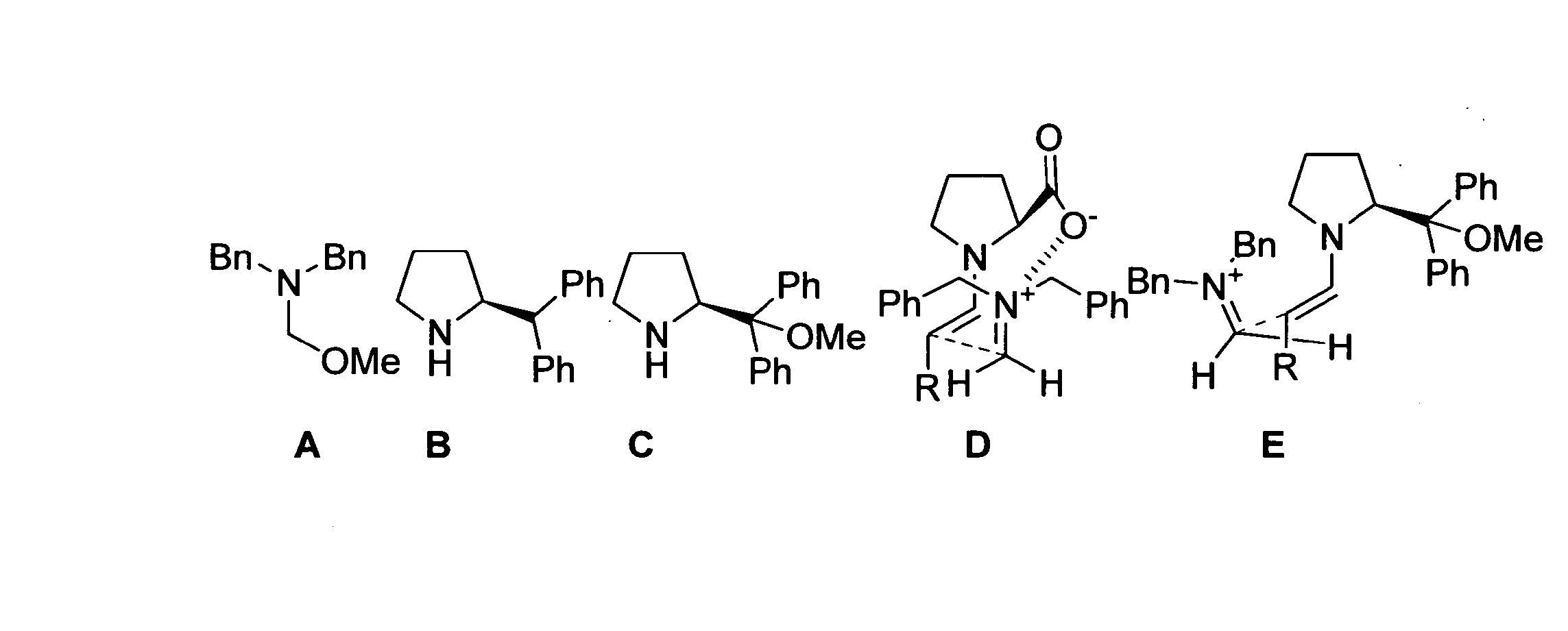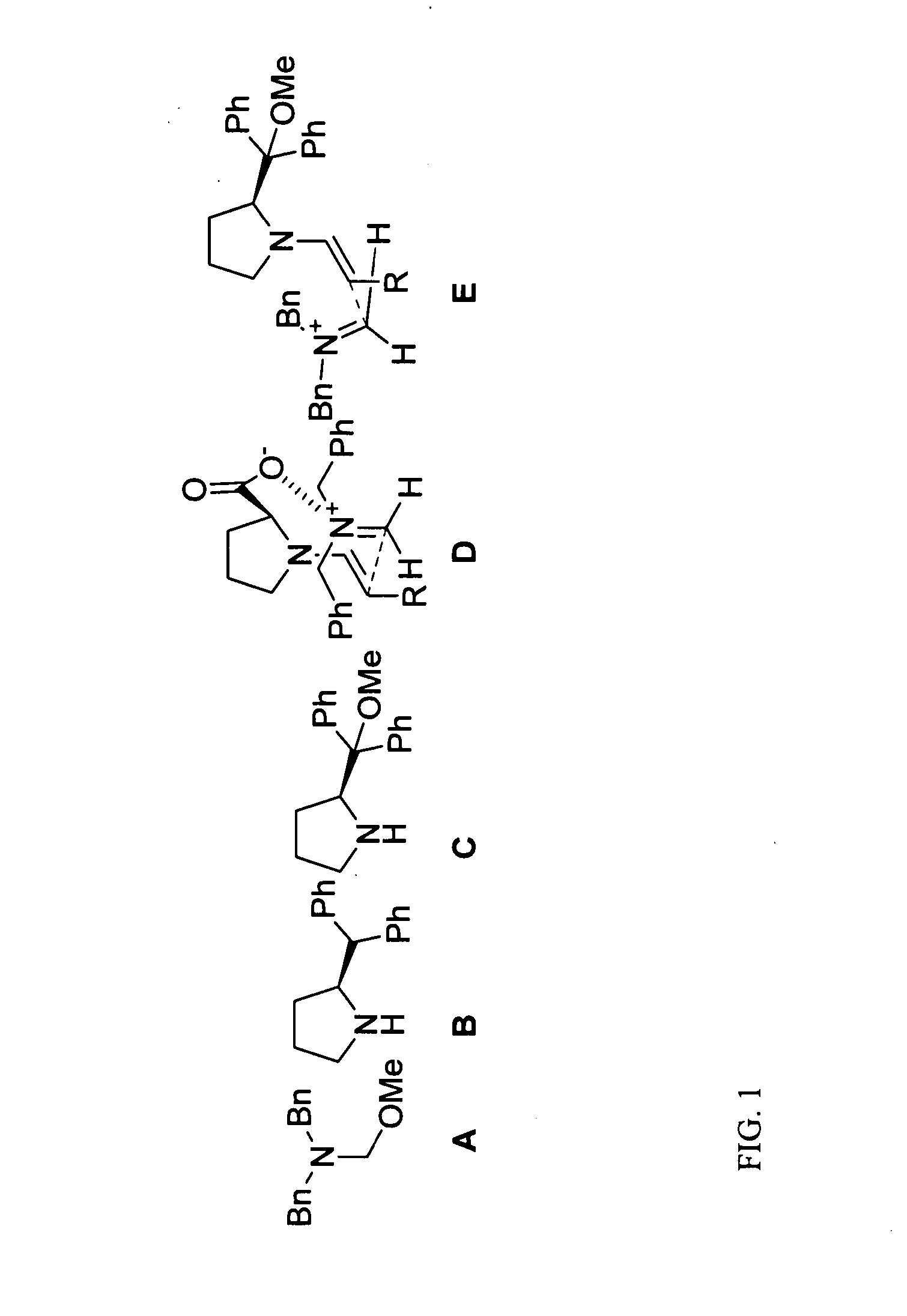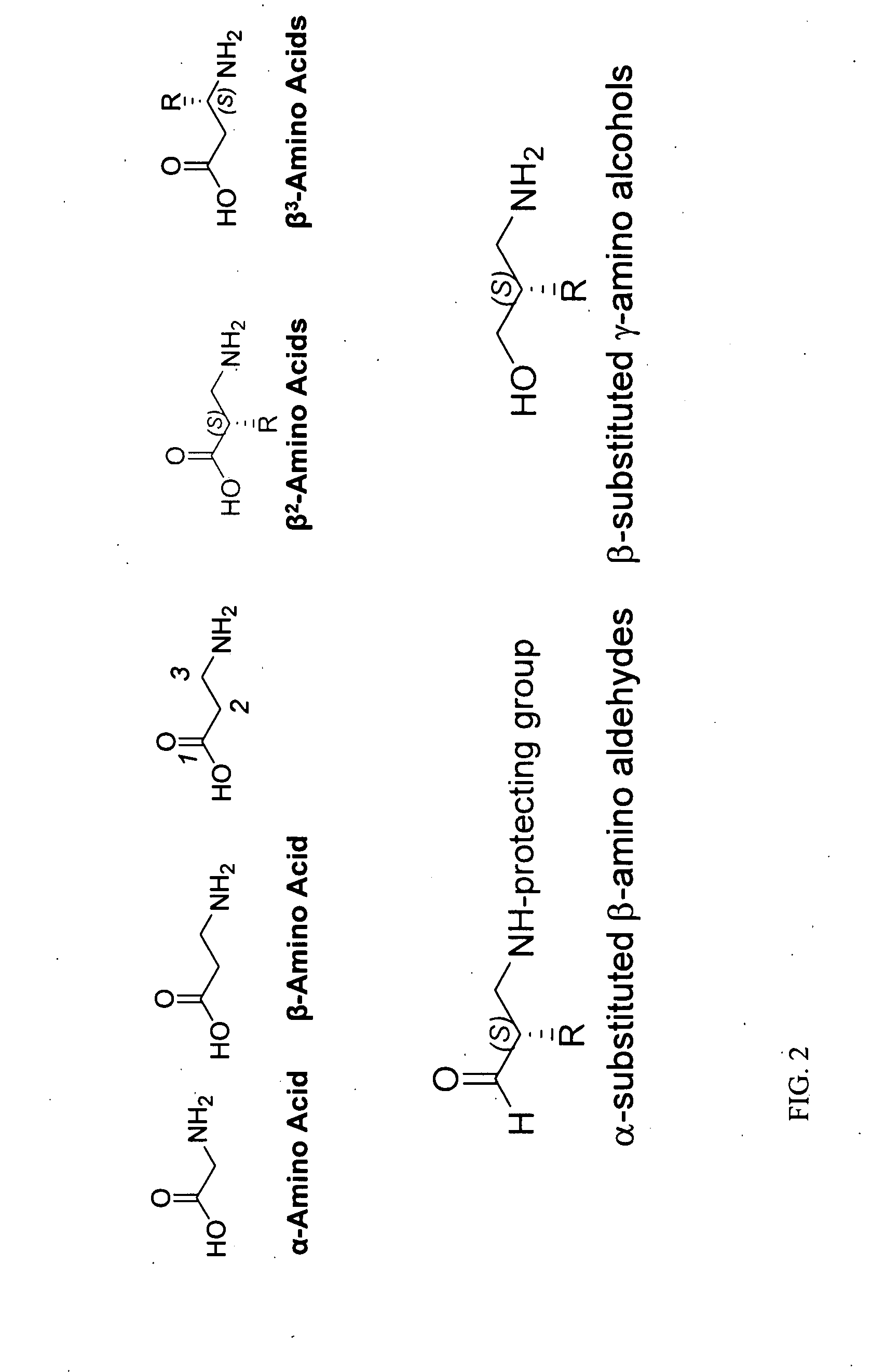Concise beta2-amino acid synthesis via organocatalytic aminomethylation
- Summary
- Abstract
- Description
- Claims
- Application Information
AI Technical Summary
Benefits of technology
Problems solved by technology
Method used
Image
Examples
example 1
Diastereoselective Strategy
[0103]
[0104] An overview of the diastereoselective strategy for β2-amino acid synthesis is shown above in SCHEME VII. As shown, the three-step procedure results in an overall yield of 40-50% with an up to 90% yield in steps II and III. Examples of the products and yield for a variety of representative reactions are shown in Table 2.
TABLE 2isolated yield %(major diastereomer)entryRrxn drIaIIIII1Pr86:1462b92852nHex89:1151c92893Bn88:1262b99924iPr85:1549c95915CH2iPr83:1751c96906CH2C6H1284:1652c9195
[0105] Using this strategy, a variety of new compounds have been synthesized. These compounds include those illustrated below where the ‘R’ groups of the new compounds are shown in the box in SCHEME VIII.
example 2
Enantioselective Strategy: Aldehyde Aminomethylation
[0106] The second strategy identified by the inventors to produce β2-amino acids is the enantioselective aldehyde aminomethylation strategy summarized in Table 3, below. As illustrated this strategy utilizes as a catalyst and results in between a 65-90% yield that has an ee of greater than 90%.
TABLE 3entryRisolated yield (%)ee (%)1Et84902Pr87923i-Pr86914Bn81925(Boc2)N(CH2)382n.d.6MeO2CCH265937CH2═HC(CH2)789n.d.
[0107] Use of this strategy has provided the following new compounds where those compounds in the box represent the ‘R’ group in SCHEME IX below.
[0108] The compounds shown above, in SCHEME IX are representative species of β2-amino acids produced by the enantioselective strategy shown below in SCHEME X. In Scheme X, the exemplary catalyst is F from Scheme IX above.
[0109] As illustrated above, in Scheme X, not only does the invention provide a simple synthesis scheme by which to produce β2-amino acids, it also provides t...
example 3
General Laboratory Procedures
[0111] Analytical thin-layer chromatography (TLC) was carried out on Whatman TLC plates precoated with silica gel 60 (250 μm thickness). Visualization was performed using a UV lamp or potassium permanganate stain. Column chromatography was performed on EM Science silica gel (230-400 mesh).
[0112] (S)-Diphenylmethyl pyrrolidine (FIG. 1B) was purchased from Acros Organics; other commercial reagents were purchased from Sigma-Aldrich. DMF is biotech grade from Sigma-Aldrich. All commercial reagents were used as received. N,O-acetal (FIG. 1A) was prepared using literature procedures.
[0113] General Laboratory Instrumentation: Proton nuclear magnetic resonance (1H NMR) spectra were recorded on Bruker AC-300 (300 MHz) spectrometers. Chemical shifts were recorded in parts per million (ppm, δ) relative to tetramethylsilane (δ 0.00). 1H NMR splitting patterns are designated as singlet (s), doublet (d), triplet (t), or quartet (q). All first-order splitting patter...
PUM
| Property | Measurement | Unit |
|---|---|---|
| Fraction | aaaaa | aaaaa |
| Fraction | aaaaa | aaaaa |
| Fraction | aaaaa | aaaaa |
Abstract
Description
Claims
Application Information
 Login to View More
Login to View More - R&D
- Intellectual Property
- Life Sciences
- Materials
- Tech Scout
- Unparalleled Data Quality
- Higher Quality Content
- 60% Fewer Hallucinations
Browse by: Latest US Patents, China's latest patents, Technical Efficacy Thesaurus, Application Domain, Technology Topic, Popular Technical Reports.
© 2025 PatSnap. All rights reserved.Legal|Privacy policy|Modern Slavery Act Transparency Statement|Sitemap|About US| Contact US: help@patsnap.com



